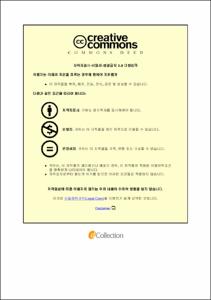비임상시험에서 간기능 및 간섬유화 평가를 위한 가도제테이트 역동조영증강 자기공명영상 및 초음파횡파탄성영상 기법 확립
- Abstract
- Objective:
Non-invasive imaging evaluation of the liver fibrosis and liver function has huge emphasis currently when huge efforts have garnered to develop new drug for liver fibrosis and chronic liver disease. Shear wave elastography (SWE) and gadexetate-enhanced DCE-MRI have been utilized in clinical researches, however rarely used in preclinical trial due to lack of validation. In this regard, we aim to validate the SWE and gadoxetate-enhanced DCE-MRI in an animal model of liver fibrosis.
Methods:
Thirty-one SD rats were randomly assigned into three groups (high-dose, low-dose, and control). The liver fibrosis was induced in SD rats by administration of thioacetamide intraperitoneally for 8 weeks: 200mg/kg for high-dose group and 150 mg/kg for low-dose group. At the end of thioacetamide administration period, we performed SWE twice with two days interval and performed gadoxetate-enhanced DCE-MRI. Liver stiffness in kPa was measured in the SWE. Five DCE-MRI indices (RLE-3, RLE-15, iAUC-3, iAUC-15, Emax) were calculated using MATLAB-based software. The correlation between these imaging parameters and histopathologic results and indocyanine green (ICG) R15 test results were calculated. The diagnostic performance to diagnose liver fibrosis was also evaluated.
Results:
On histopathology, animal model was successful in that the collagen areas was highest in high-dose group (24.86 ± 4.55), followed by low-dose group (16.01 ± 3.25), and control group (6.27 ± 2.10). The correlation between the histopathologic collagen area and imaging parameters was similarly high in iAUC-15, iAUC-3, and RLE-3 (-0.78 to -0.81), but low in RLE-15 (-0.51) and liver stiffness in kPa (-0.59). The correlation coefficients between MRI indices and liver function on ICG-R15 was highest in iAUC-15 (-0.65) followed by iAUC-3 (-0.63), RLE-3 (-0.62), Emax (-0.58), and RLE-15 (-0.56). In the ROC analysis to diagnose liver fibrosis (i.e., high-dose group and low-dose group), the diagnostic accuracy of RLE-3, iAUC-3, iAUC-15, and Emax were 100% (AUROC 1.000) with complete differentiation between the liver fibrosis groups and control group. In contrast, the diagnostic value of the RLE-15 was significantly lower than the other MRI indices (AUROC 0.777)
Conclusions:
Theoretically, the ultrasonographic SWE reflects liver fibrosis and the gadoxetate-enhanced DCE-MRI reflects liver function. In our study using the animal liver fibrosis model, the ultrasonographic SWE and gadoxetate-enhanced DCE-MRI are quite feasible to evaluate both histopathologic liver fibrosis and physiologic liver function in non-invasive manner in preclinical trial.
- Issued Date
- 2018
- Awarded Date
- 2018-02
- Type
- Dissertation
- Alternative Author(s)
- Jimi Huh
- Affiliation
- 울산대학교
- Department
- 일반대학원 의학과
- Advisor
- 김경원
- Degree
- Doctor
- Publisher
- 울산대학교 일반대학원 의학과
- Language
- eng
- Rights
- 울산대학교 논문은 저작권에 의해 보호받습니다.
- Appears in Collections:
- Medicine > 2. Theses (Ph.D)
- 파일 목록
-
-
Download
 200000003384.pdf
기타 데이터 / 1.77 MB / Adobe PDF
200000003384.pdf
기타 데이터 / 1.77 MB / Adobe PDF
-
Items in Repository are protected by copyright, with all rights reserved, unless otherwise indicated.